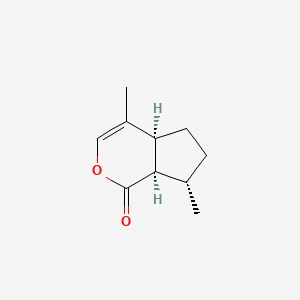| Authors | Title | Published | Journal | PubMed Link |
|---|---|---|---|---|
| Feaster JE et al. | Dihydronepetalactones deter feeding activity by mosquitoes, stable flies, and deer ticks. | 2009 | J. Med. Entomol. | pmid:19645285 |
| Nestorović J et al. | Nepetalactone content in shoot cultures of three endemic Nepeta species and the evaluation of their antimicrobial activity. | 2010 | Fitoterapia | pmid:20307630 |
| Shafaghat A and Oji K | Nepetalactone content and antibacterial activity of the essential oils from different parts of Nepeta persica. | 2010 | Nat Prod Commun | pmid:20433086 |
| Gkinis G et al. | Antioxidant activity of Nepeta nuda L. ssp. nuda essential oil rich in nepetalactones from Greece. | 2010 | J Med Food | pmid:20626246 |
| Koczor S et al. | Attraction of Chrysoperla carnea complex and Chrysopa spp. lacewings (Neuroptera: Chrysopidae) to aphid sex pheromone components and a synthetic blend of floral compounds in Hungary. | 2010 | Pest Manag. Sci. | pmid:20949547 |
| Birkett MA et al. | Repellent activity of catmint, Nepeta cataria, and iridoid nepetalactone isomers against Afro-tropical mosquitoes, ixodid ticks and red poultry mites. | 2011 | Phytochemistry | pmid:21056438 |
| pmid:21328177 | ||||
| Zhu JJ et al. | Nepetalactones from essential oil of Nepeta cataria represent a stable fly feeding and oviposition repellent. | 2012 | Med. Vet. Entomol. | pmid:21781140 |
| Sofrata A et al. | Benzyl isothiocyanate, a major component from the roots of Salvadora persica is highly active against Gram-negative bacteria. | 2011 | PLoS ONE | pmid:21829688 |
| Sun YF et al. | Two odorant-binding proteins mediate the behavioural response of aphids to the alarm pheromone (E)-ß-farnesene and structural analogues. | 2012 | PLoS ONE | pmid:22427877 |
Nepetalactone cis-trans-form
Nepetalactone cis-trans-form is a lipid of Prenol Lipids (PR) class.
